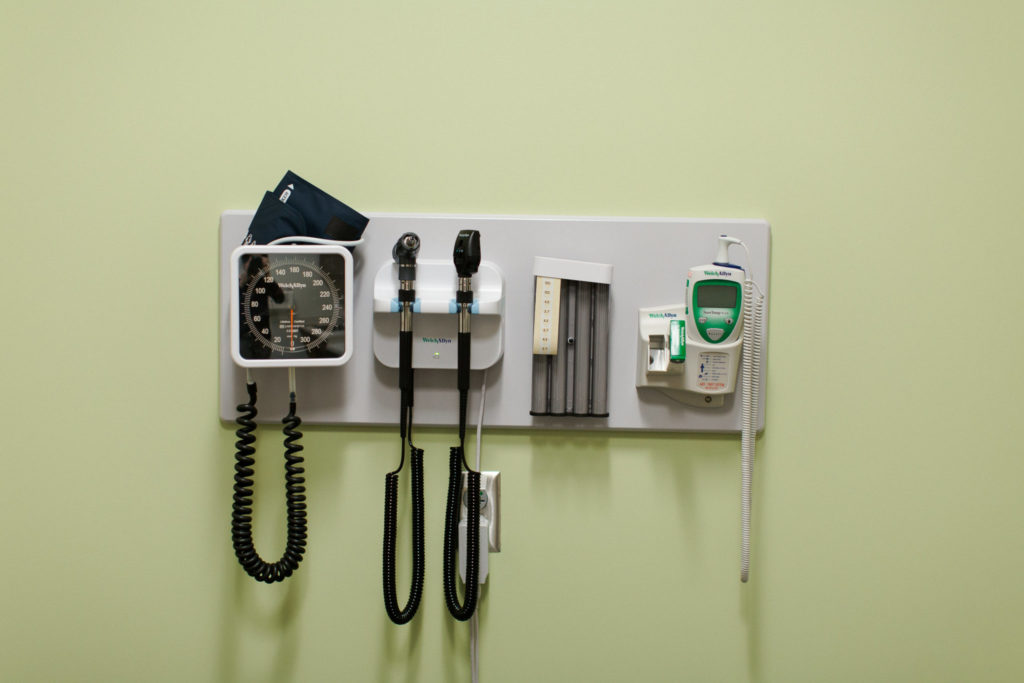April is Donate Life month, which celebrates the gift of organ donation. Right now, more than 110,000 men, women and children await lifesaving organ transplants. Every 10 minutes, another person is added to a transplant waiting list. Sadly, 8,000 people each year (about 22 a day) die on this waiting list because the organs they need are not donated in time. Here are some ways to become a donor and to save these lives.
Living Donation
Living donors can provide a kidney or a portion of their intestine, liver, lung or pancreas to a waiting patient. The most common living donation is for kidney transplants, as these make up about 83% of people currently waiting on a donor. There are three types of living donations.
- In a non-directed donation, the donor and recipient do not know each other.
- A paired donation involves two pairs of living kidney donors and transplant candidates who do not have matching blood types. The candidates “trade” donors, so both recipients receive their corresponding blood type.
- In directed donation, the donor specifically names the person they are donating to, which is common among families or close friends.
Who can donate?
Living donors must be over the age of 18, and in good physical health. Living donation is a major surgery, so all donors must be made aware of the risks associated with the procedure. The decision to donate should be completely voluntary and free of guilt.
How to Get Started
Contact a transplant center to begin the screening and matching process.
Deceased Donation
Deceased organ donation is the process of giving an organ or a part of an organ, at the time of the donor’s death, for the purpose of transplantation to another person. One deceased donor can save up to 8 lives, restore sight to 2 people and help heal the lives of more than 75 people!
Organs that can be donated for transplant:
- Heart
- Lungs
- Liver
- Kidneys
- Pancreas
- Intestines
Tissue that can be donated for transplant:
- Corneas
- Bone/tendon
- Vein/artery
- Heart valves
- Skin
If you decide that you would like to be an organ donor when you die, it is important to register your decision. Many organ donors are those who die suddenly and unexpectedly. By registering your decision, you relieve your loved ones of the decision of what to do in a moment filled with shock and grief.
Who can donate?
People of all ages, ethnicities and medical histories can be deceased donors. The circumstances of your death will determine which organs and tissue can be donated.
How to Get Started
Register here to become an organ donor.
Bone Marrow Donation
Bone marrow is the soft, spongy tissue inside of bones that makes blood-forming cells, or stem cells. These cells eventually turn into blood cells. Each year, thousands of people are diagnosed with blood cancers such as leukemia and lymphoma, bone marrow diseases such as aplastic anemia or genetic diseases like sickle cell disease. For these conditions, a bone marrow transplant is often the only way to cure the disease.
Those who decide to be bone marrow donors are sent a tissue collection kit, which is used to swab the inside of the cheek. The registry will use these samples to catalog specific protein markers, called human leukocyte antigens (HLA). When doctors need a bone marrow donor, they search the Be The Match registry for donors who match the HLA of their patients.
If chosen, donors go through one of two donation methods: PBSC and bone marrow. PBSC is a non-surgical procedure, requiring donors to give blood. Bone marrow donation is a surgical procedure that takes place in an operating room. Doctors use needles to withdraw liquid marrow from the back of your pelvic bone.
Who can donate?
In order to join the registry, donors must:
- Be between the ages of 18-44
- Be committed and willing to donate to any patient in need
- Meet the stated medical requirements
How to Get Started
Join the Be the Match registry to begin your testing and matching.
Blood Donation
In the United States alone, someone needs blood every two seconds. Some cancer patients, due to the nature of their condition, are unable to make their own blood, so they rely on transfusions. Trauma patients and surgery patients are given blood to prevent them from dying. Those with chronic diseases receive transfusions to help them go about their daily lives.
There are multiple types of blood donation:
- Whole blood donation collects all part of the blood, and is used in a variety of purposes, but is frequently given to trauma patients and people undergoing surgery.
- Power Red donation separates the red blood cells from other blood components, and returns the plasma and platelets to your body. Power Red donations are given to trauma patients, newborns and emergency transfusions during birth, people with sickle cell anemia, and anyone suffering blood loss.
- During a Platelet Donation, an apheresis machine collects platelets and some plasma, but returns red blood cells to your bloodstream. These platelets are vital to some cancer treatments and organ transplants.
Who can donate?
For whole blood donations, the basic requirements are:
- Donor must be in good health and feeling well
- Cannot have donated blood in the last 56 days
- Must be at least 16 years old
- Must weigh at least 110 pounds
To view a full list of requirements, visit the Red Cross website.
How to Get Started
Visit the Red Cross website to find a blood drive or donation center near you.
